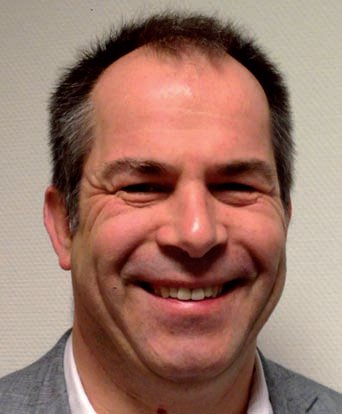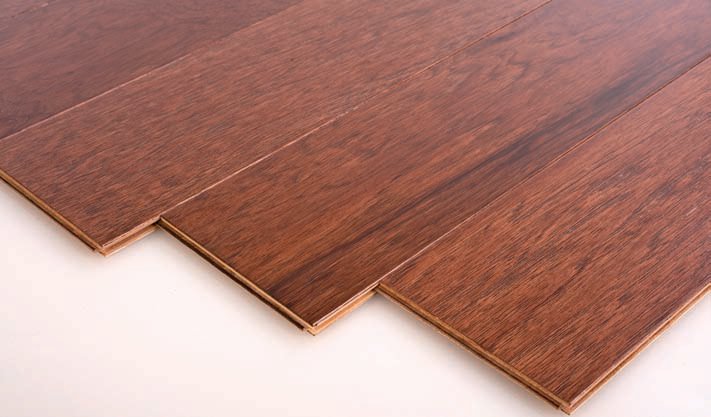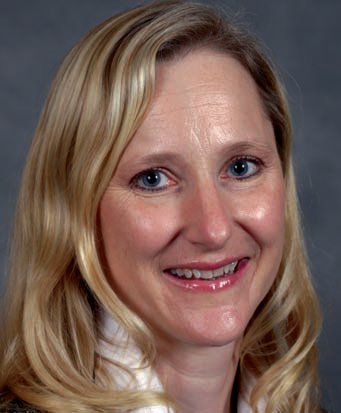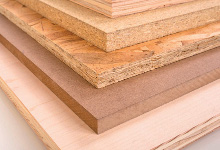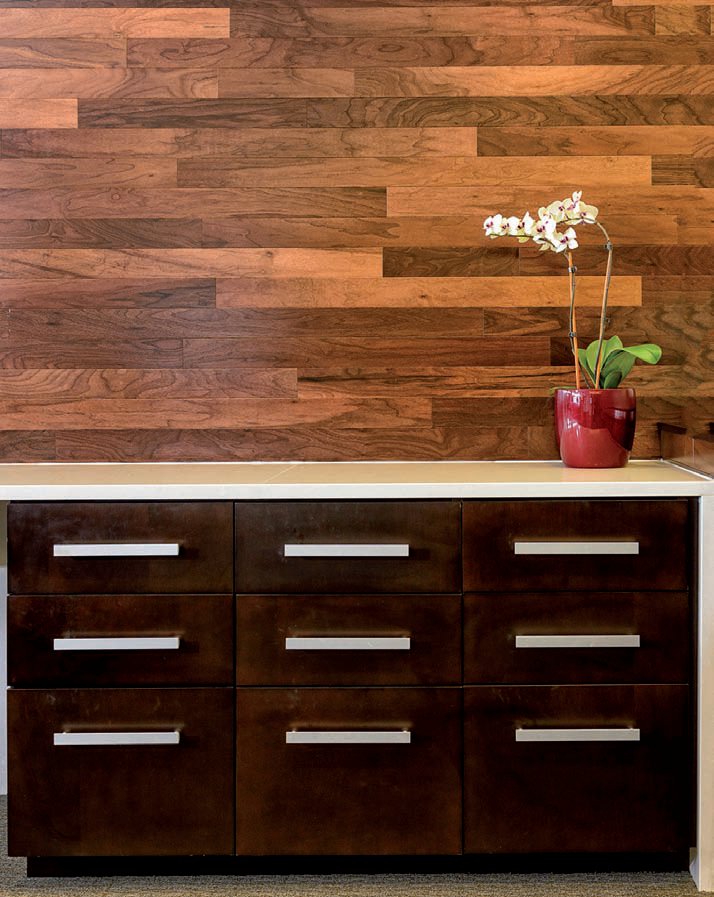Meaningful innovation
28 February 2014Ashland is a globally operating supplier of speciality chemicals to a range of diverse industries. For the panel industry, it offers formaldehydefree adhesive technology with its trademarked Soyad adhesives.
Ashland Inc was founded in 1924 in the US and has a long history in the oil business. However, it exited oil production in 2005, but continues to trade in oil-derived additives in some of its divisions.
In 2008, Ashland acquired a company called Hercules Incorporated, which at that time had two divisions: Pulp & Paper and Aqualon.
Pulp & Paper was combined with Ashland's water group to form Ashland Water Technologies, while Aqualon continued as a separate division within the Ashland group until 2011. This was when Ashland acquired International Specialty Products (ISP) and combined it with Aqualon to form Ashland Specialty Ingredients.
However, It is the Ashland Water Technologies division which is of interest to panel manufacturers, as we shall see.
Ashland says it aims to hold strong market positions in all areas in which it operates, aiming to be number 1 or 2 in each sector.
It says it is an innovation-focused company with a technology-driven sales process and approach to its market, with highly-tailored customer solutions.
Ashland also claims a broad applications expertise with deep-reaching industry knowledge of product applications; and insights and expertise to create comprehensive solutions to solve customers' unique problems.
Global sales in the year 2013 amounted to US$7.8bn, with sales in more than 100 countries - and around half that turnover being outside the US. Around 15,000 people are employed globally.
Today, there are four divisions in Ashland: Specialty Ingredients; Water Technologies; Performance Materials; and Consumer Markets. These cover an enormous range of products, from additives for skin care, paints, construction, printing and ceramics, to resins supplied to the wind turbine and automotive industries, to name but a few.
Ashland Water Technologies is the division which handles wood adhesives, as well as paper making chemicals, and accounted for 21% of group turnover in 2012.
The focus of the wood adhesives business is in engineered, or composite, wood products such as hardwood plywood, engineered wood flooring, particleboard, MDF and OSB. All these wood products are manufactured with thermosetting adhesives.
Ashland's wood adhesives, branded with the trademark name Soyad, are for use in interior grade panels only. As the reader may have guessed, 'Soyad' refers to the line of adhesives which use the agricultural product soya as their base.
Ashland entered the wood adhesives industry in 2005, so is a relative newcomer, but says it has since applied its research and technological knowhow to gain a strong foothold in the market.
At Ashland Water Technologies' offices near Rotterdam in the Netherlands, I met Dr Melinda Burn. She is global business director for sustainable building and construction and is normally based in Wilmington, Delaware, in the US.
I asked her why the company decided to enter the wood panel adhesives market.
"We were looking at 'adjacent growth markets', that is, markets that in some way related to our existing businesses but were different," she explained.
"We had already been in the paper industry for many years as one of the top providers of paper chemicals and we thought, what else can we do?"
Dr Burn explained that Ashland became aware of research work that was ongoing at Oregon State University (OSU), looking at various wood adhesives, and soon realised that there was a big debate going on in the panel industry generally around the use of formaldehyde in adhesives.
"We saw the need for a formaldehyde-free adhesive for the panel industry and thus Soyad was born," said Dr Burn. "Meanwhile, a professor at OSU was looking at bio-based adhesives and recognised that many of them did not give the required properties," she continued. "Protein glues need something more to give them those properties, so the initial idea was to take different cross-linking resins and combine them with Soya."
Thus Ashland worked with OSU to gain a global licence. Ashland then invested the time of its R&D team to optimise the technology to be suited for an industrial setting and 'Soyad' trademarked adhesives were created.
The company also worked closely with US panel manufacturer Columbia Forest Products (CFP), which was interested in a formaldehyde-free adhesive and was very keen to be the first panel maker to offer a no-added- formaldehyde panel.
"We were coming from the chemical side and they from the production side so this was a very important collaboration," said Dr Burn. "This work was on hardwood plywood and that is still our largest footprint today.
"The whole area of formaldehyde-free adhesives aligns with the Ashland philosophy. We are not only offering a formaldehyde-free product, but we could also positively impact the safety of employees in the panel factory environment." Since Soyad adhesives hit the market in 2005, at first in North America, and in hardwood plywood, it has expanded into other markets and is now commercially traded, or in trials, in all types of composite panels.
"Over 70 million hardwood plywood panels have been produced in the US using Soyad adhesives," said the global business director.
There are different ways in which those Soyad adhesives can be utilised:
They can be used 100% as the adhesive in an interior grade panel such as hardwood plywood; or they can be used in combination with other resins, for instance with Soyad in the face layer of particleboard and another resin in the core layer.
"However, the driver is to reduce formaldehyde emissions, so if you use urea formaldehyde or melamine urea formaldehyde in the core, the board does not qualify for NAF [no-added formaldehyde]," explained Dr Burn. "If you used pMDI resin in the core, the whole panel does then qualify as NAF."
A third alternative is to use Soyad as a coadhesive, mixed with pMDI. This could be used to produce MDF, particleboard, or OSB that meets the OSB3 standard.
"When we were looking at options on how best to serve the market, we saw that pMDI was a no-added-formaldehyde resin and looked at how we could mix Soyad adhesives with pMDI," said Dr Burn. "The end-user gets to reduce their consumption of pMDI and they still get the same panel properties [as with pure pMDI]."
"We can reduce the pMDI consumption by typically up to 30 to 45%, depending on properties, sizes, process conditions - there are a lot of variables involved."
Thus Ashland has carried out a lot of research in its own laboratories, where its scientists are always looking at new ideas, and also work with Ashland's technical experts in the field, such as Geert Dijkstra, business development manager, sustainable building and construction.
"Today we have 10 US patents, three European patents and more than five global patents pending; this is a technology that continues to evolve," said Mr Dijkstra.
"We did extensive testing in developing a co-adhesive - and extensive testing with customers - before gaining acceptance by the panel maker. That process can take up to 12 to 18 months."
Mr Dijkstra said that minimal equipment modifications are required in the panel maker's production line to accommodate the use of Soyad adhesive/pMDI co-adhesive.
Meanwhile, Ashland states that panel characteristics are not generally adversely affected, when compared with a 100% pMDIglued panel.
"In terms of thickness swelling, if you add 35 to 40% Soyad, the panel still comes within the thickness swell requirements for OSB3," said Mr Dijkstra. "The addition rate of Soyad adhesive will be determined by the thickness swell required, or by the particular grade of OSB that the mill is producing. Our main volume market is in OSB3.
"Regulatory drivers really make a difference and manufacturers are paying increased attention. It is not just manufacturers in those areas where regulations are a driving force, but also those who are selling into that market - for example into the US."
Raw material availability issues seem to affect every area of the panel making business, but in the case of Soyad adhesives, it seems there are no such concerns.
"We form a tiny fraction of the global soya market," said Dr Burn. "The majority of our business is currently in the US, so we mainly source our soya from there. However, we do have to be able to source soya from where the customer wants it. Some customers refuse to use genetically-modified [GM] soya for example."
While Soyad adhesive's main market penetration is in the hardwood plywood sector at present - and in North America - Ashland sees strong expansion possibilities in the composite panels OSB, MDF and particleboard, globally. Currently, the use of Soyad as a co-adhesive with pMDI is a smaller portion of the market.
"Soyad is the trade name, but there are many different products within that product line," said Dr Burn. "We have tried to create a product portfolio with something that is suitable for each customer's needs."
Obviously, any chemical product company has to have good R&D facilities and Ashland can call on its own laboratories in Wilmington, Delaware, US and Krefeld in Germany (coincidentally also the home town of Siempelkamp). The company also has scientists who conduct research at the Forest Products Laboratory in Madison, Wisconsin, US and those scientists can reach out to experts in all areas of wood science, as Dr Burn put it.
"We do our primary research at our research centres, but we produce Soyad adhesive in very many locations around the world, all of which have their own testing facilities. The final Soyad adhesive has two components: the soya and the cross-linking resin component. These are blended on site at the customer's plant.
"The cross-linking component has been used in the paper industry for many years and we have modified it to perform in our Soyad system," continued Dr Burn. "Soya itself is a glue, but it is not strong enough on its own. It has a very complex molecule and the cross-linking resin not only links to that molecule, but also to the wood itself. The dominant component of the Soyad adhesive formulation is the soya, but the cross-linking component is critical and differentiates Soyad adhesive from other types of soy adhesives."
Ashland describes Soyad adhesive as the 'natural choice for particleboard', being formaldehyde-free, LEED compliant and CARB Phase 2 exempt. It also says that it has proven strength characteristics and is costcompetitive. Soyad adhesive can be used in the face layer only, with UF, MUF, MF or pMDI being used in the core.
"Formaldehyde emissions from particleboard made with Soyad adhesive in the surface layer have been shown to be significantly below CARB Phase 2 standards; and consistently below emissions targets for panels made with ultra-low-emittingformaldehyde (ULEF) resins," said Dr Burn.
"Obviously, overall performance of a panel in terms of such emissions will depend on the resin used in the core: E0 and Japanese F**** emission standards are easily achievable with a zero-added-formaldehyde adhesive in the core."
Ashland also says that Soyad adhesives can be applied using existing resin pumping systems and that no special mixing equipment is required, with only minor system changes needed to convert from a formaldehyde-based system to a Soyad adhesive-based one.
Dosage rates, press temperatures and press times are similar to those for formaldehyde-based systems, says the company.
Ashland says that the same principles of minimal change to existing production practices and a NAF panel applies to the use of Soyad in hardwood plywood panels, where it is used as a straightforward mix of soy flour with cross-linking resin to give a moisture resistant bond for plywood construction and for veneer facing or MDF/plywood composites.
When used as a co-adhesive in the production of OSB, particleboard or MDF, Ashland says it offers reduced adhesive costs, reduced isocyanate use, improved machinability of panels and fewer quality defects.
Soyad co-adhesives are water-based dispersions formulated with natural soy flour and proprietary ingredients. When blended with an isocyanate (pMDI) resin, a stable emulsion is formed and the resulting adhesive has been shown to have the same strength as a conventional isocyanate-based adhesive, but is less brittle when cured, thus improving machinability and reducing chipouts.
The water in the Soyad co-adhesive also acts as a diluent, increasing the total volume of the resulting adhesive and thus improving the distribution of the adhesive throughout the wood, giving more consistent bonding and those better machining characteristics, says Ashland.
Obviously, substituting part of the isocyanate with less-costly Soyad adhesive also reduces overall adhesive spend for the panel manufacturer.
During panel production, the Soyad adhesive and pMDI can be sprayed separately, or pre-mixed.
The future for Soyad adhesives would seem to be bright as the message spreads around the panel market.
"We are focused on growing the market with our range of products that can be tailored to suit the customer's needs," said Dr Burn. "We have a team placed strategically around the globe and we have technical specialists, like Geert Dijkstra, who will go to visit the customer and work with them. Our specialists are generally homebased, like Geert, and are therefore closer to the customer."
Ashland's 'tag line' is "With good chemistry, great things happen".
